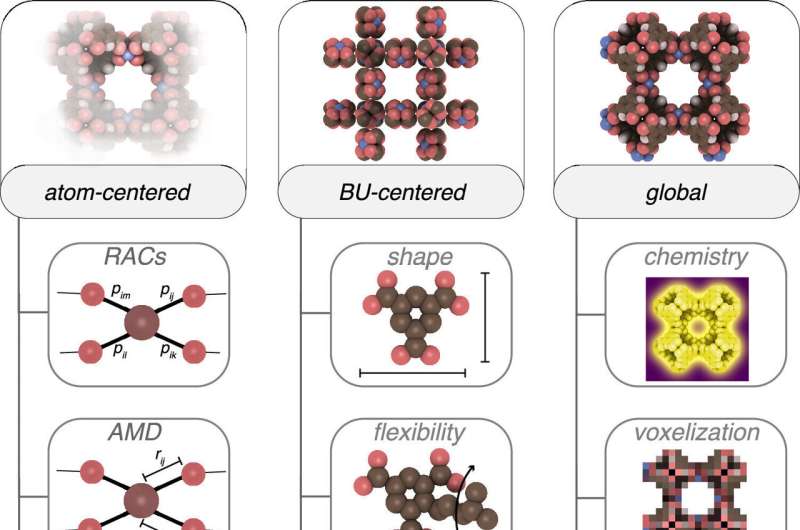March 24, 2023 report
This article has been reviewed according to Science X's editorial process and policies. Editors have highlighted the following attributes while ensuring the content's credibility:
fact-checked
peer-reviewed publication
trusted source
proofread
An 'ecosystem' of tools to boost machine learning-based design of metal–organic frameworks

A team of chemists and computer scientists from the Swiss Federal Institute of Technology Lausanne, the University of California and Institut des Sciences et Ingenierie Chimiques, Ecole, have developed an ecosystem of tools to boost machine-learning-based design of metal-organic frameworks.
In their study, reported in the journal ACS Central Science, Kevin Maik Jablonka, Andrew Rosen, Aditi Krishnapriyan and Berend Smit coded tools to convert data into machine learning inputs to create a system to boost machine-learning frameworks.
Reticular chemistry is the science of designing and synthesizing porous crystalline materials with certain predefined structures and properties (building blocks). These materials, known as metal-organic frameworks (MOFs) have applications in gas storage, separation, catalysis, sensing and drug delivery.
Unfortunately, the discovery and optimization of new MOFs is still largely based on trial-and-error experiments, which is time-consuming and costly. To speed up the development of reticular chemistry, some of the members of the current team created a package of applications called Mofdscribe and released it for use by the general public back in 2022.
Since that time, Mofdscribe has been used by many chemists to help them create distinct MOFs. The current team recognized that Mofdscribe had some limitations, however, and set out to create a more useful system.
To that end, the researchers created code that allowed for integrating computational modeling, machine learning, data mining and high-throughput screening. They also resolved a problem that involved the data used to train machine-learning algorithms leaking into test sets. One of their goals, they note, was to create dataset analysis tools researchers do not yet need, but likely will at some point. This, they suggest, should help in comparing performance differences between machine learning systems.
The result was what the team describes as an "ecosystem"—an environment where chemists could go to work out new machine-learning approaches to creating MOFs with desired functions and properties. They note it also allows for identifying novel synthetic routes and reaction conditions.
The research team also notes that the new ecosystem will facilitate the sharing and reuse of data and knowledge among researchers in the field of reticular chemistry, which they believe will foster collaboration and innovation.
More information: Kevin Maik Jablonka et al, An Ecosystem for Digital Reticular Chemistry, ACS Central Science (2023). DOI: 10.1021/acscentsci.2c01177
Journal information: ACS Central Science
© 2023 Science X Network




















